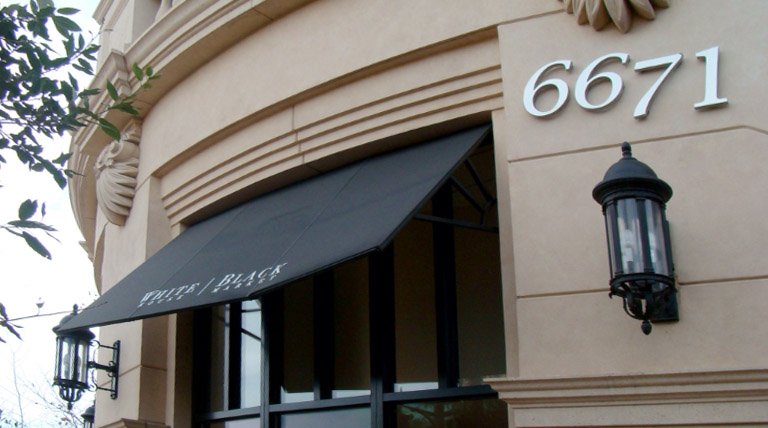
We all love them and know them as a familiar staple of modern building design. Awnings play a vital role in our buildings, especially here in sunny Las Vegas where temperatures reach well over 110* F. However Awnings went through several changes as humanity got more and more adept at creating them. With that said lets briefly explore the birth and evolution of modern-day awnings.
Awnings in the 1800’s
The first awnings that appeared on communal buildings such as stores and banks were crude and improvised. Typically built out of wood or cast iron posts built into the sidewalk and supported by a front crossbar. While their construction may have been crude, the shade and cooler temperatures they provided couldn’t be denied as the awnings provided both! Following he conclusion of the American Civil War, awnings saw a radical growth in popularity. You can thank American industrialization for creating the first awning frames that were easily bent and weaved together to create any number of shapes. These innovations made awnings much more affordable and accessible to even the most humble of storefronts.
Awnings in the 1900’s
With awnings becoming more popular on buildings and storefronts the focus pivoted to creating more user-friendly variations including a distant cousin of the modern roller style awning popular even to this day! However back in the 1900s, they used a wooden or metal cylinder that was used to store the awning. They also featured a hand-operated gearbox that was either protected by wood or metal or built into the building. While it may sound crude by modern standards, this innovative awning feature increased the usability and adaptability of awnings tremendously, making them much more approachable to most building owners.
The brief decline of awnings popularity
As buildings increased in size and height, building design adapted to a much more modern and “flat” design that made awnings seem old and “Traditional”. These innovations in building design lead to a brief decline in awning popularity. However, as my tone may have suggested this brief lull didn’t last too long as we all know the familiar and welcoming shade that modern-day awnings provide. Awning manufacturers began pointing out the energy savings that awnings provide. Energy savings that we all are very familiar with modern-day awnings. Awnings also adapted to the sleek and new modern building designs by offering new sleek aluminum and fiberglass awnings.
Modern Day Awnings
We have now reached our beloved modern-day awnings. Awnings that offer incredible modern features in nearly any shape and size. Modern-day awnings offer innovations such as backlit awnings that can be used to proudly display a company’s logo and street address. However the love for traditional awnings hasn’t gone away, in fact, it has seen a recent resurgence in popularity as the triangular “Shed” style has become a popular purchase. Aside from shopping centers and malls, awnings are also appearing in historic neighborhoods and buildings. The awnings featured in these places are typically fixed frames that are nearly identical to the awnings that would have been popular 100 years ago! Talk about an easy choice to make, shade your customers and stay relevant to the period the building was built in? Sign me up!



